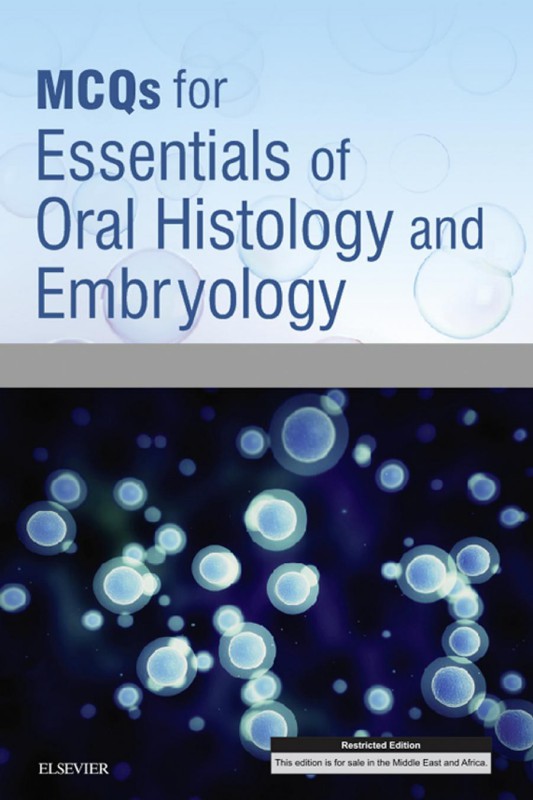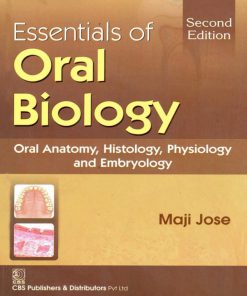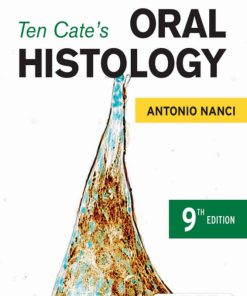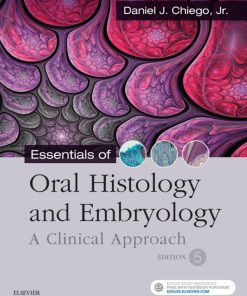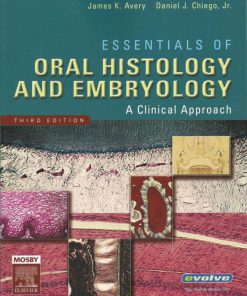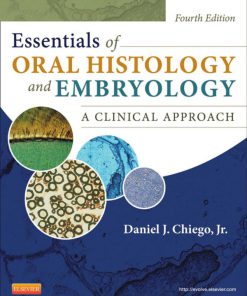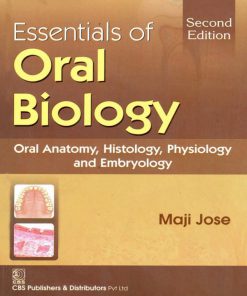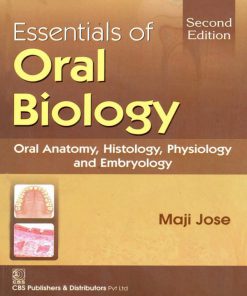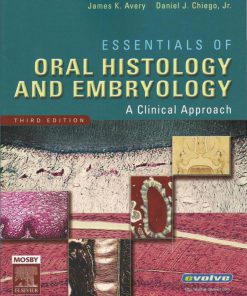MCQs for Essentials of Oral Histology and Embryology E Book 1st edition by Elsevier Ltd ISBN 0702069819 9780702069819
$50.00 Original price was: $50.00.$25.00Current price is: $25.00.
Authors:Elsevier Ltd , Series:Dentistry [259] , Tags:Medical; Dentistry; Dental Hygiene; General , Author sort:Ltd, Elsevier , Ids:Google; 9780702069819 , Languages:Languages:eng , Published:Published:Nov 2015 , Publisher:Elsevier Health Sciences , Comments:Comments:MCQs for Essentials of Oral Histology and Embryology E-Book
MCQs for Essentials of Oral Histology and Embryology E-Book 1st edition by Elsevier Ltd – Ebook PDF Instant Download/Delivery. 0702069819, 978-0702069819
Full download MCQs for Essentials of Oral Histology and Embryology E-Book 1st Edition after payment
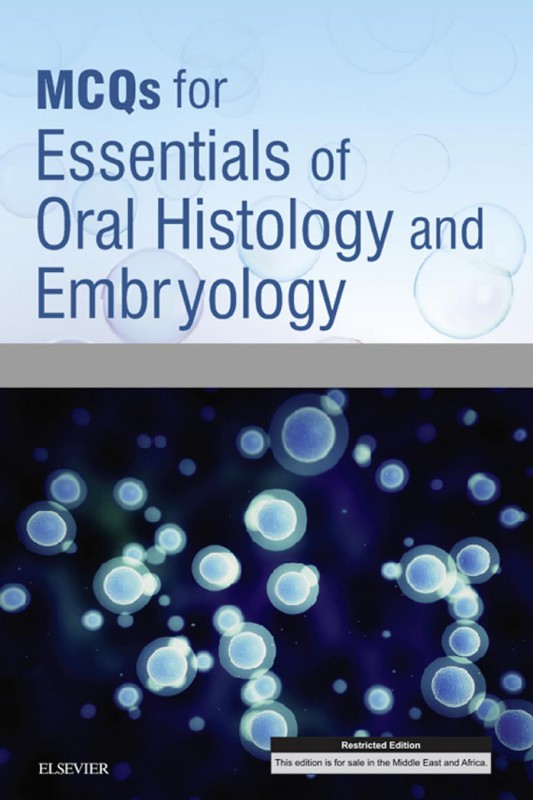
Product details:
ISBN 10: 0702069819
ISBN 13: 978-0702069819
Author: Elsevier Ltd
For students, a good way to test their understanding and knowledge about a particular subject and to prepare for exams is to practice using Multiple Choice Questions (MCQs). This book on MCQs for Essentials of Oral Histology and Embryology has been written keeping in mind the above purpose.
In this book Elsevier has worked with professional question writers to prepare a collection of 500 MCQs to accompany the subject matter covered in each chapter of the textbook, Essentials of Oral Histology and Embryology: A Clinical Approach, 4th edition by Daniel J Chiego (ISBN: 978-0-323-08256-3). The style of MCQs is three distractors and one correct answer so the student will need to mark the correct option accordingly. Each chapter is followed by a feedback section showing the correct answers and a very quick rationale why each answer is correct or incorrect thus elevating student’s confidence to answer many more MCQs on the subject. Below each rationale, reference to the page number of the main textbook, Essentials of Oral Histology and Embryology, is given for the students who want to revise or study the particular topic again.
The aim for the student is to get as many correct as possible, and to revise any subject area where the number of correct marks is low. We sincerely hope that students will find the book extremely useful. We welcome comments and suggestions from students and teachers, which will help in improving this book further.
MCQs for Essentials of Oral Histology and Embryology E-Book 1st Table of contents:
Chapter 1: Introduction to Oral Histology and Embryology
1. What is the primary purpose of studying oral histology and embryology?
a) To understand the development of teeth and oral structures
b) To focus on oral diseases and their management
c) To learn about the anatomy of the skull
d) To examine the genetic factors in oral health
Answer: a) To understand the development of teeth and oral structures
2. Oral histology primarily deals with the study of:
a) Genetics of oral diseases
b) Microscopic structure of oral tissues
c) Development of facial bones
d) Nutritional factors affecting oral health
Answer: b) Microscopic structure of oral tissues
Chapter 2: Basic Principles of Histology
3. Which of the following is a key function of histology in the study of oral tissues?
a) Studying the biochemical composition of the oral cavity
b) Understanding the microscopic structure of oral tissues and cells
c) Investigating the role of saliva in oral health
d) Diagnosing systemic diseases affecting the oral cavity
Answer: b) Understanding the microscopic structure of oral tissues and cells
4. In the study of histology, tissue samples are often prepared using which process?
a) PCR (Polymerase Chain Reaction)
b) Histochemical staining
c) Bone marrow aspiration
d) Radiographic imaging
Answer: b) Histochemical staining
Chapter 3: Embryology of the Oral Cavity
5. The oral cavity begins to develop as a depression in the ectoderm known as the:
a) Stomodeum
b) Mandibular arch
c) Maxillary process
d) Buccopharyngeal membrane
Answer: a) Stomodeum
6. Which of the following processes is responsible for the formation of the palate during embryonic development?
a) Fusion of the maxillary and mandibular processes
b) Fusion of the palatal shelves
c) Development of the dental lamina
d) Formation of the neural tube
Answer: b) Fusion of the palatal shelves
Chapter 4: Tooth Development
7. The process of tooth development begins with the formation of which structure?
a) Dental papilla
b) Dental lamina
c) Enamel organ
d) Odontoblasts
Answer: b) Dental lamina
8. Which cells are responsible for the formation of enamel during tooth development?
a) Odontoblasts
b) Ameloblasts
c) Cementoblasts
d) Fibroblasts
Answer: b) Ameloblasts
Chapter 5: Histology of Tooth Structures
9. Which of the following structures is primarily responsible for forming the hard tissue of the tooth known as dentin?
a) Enamel
b) Cementum
c) Odontoblasts
d) Ameloblasts
Answer: c) Odontoblasts
10. The periodontal ligament is responsible for:
a) Secreting enamel matrix
b) Forming dentin in the tooth root
c) Attaching the tooth to the alveolar bone
d) Producing cementum in the root
Answer: c) Attaching the tooth to the alveolar bone
Chapter 6: Development of the Facial Skeleton
11. The first pharyngeal arch is responsible for the formation of:
a) The maxillary and mandibular bones
b) The nasal cavity and sinuses
c) The frontal bone
d) The nasal and lacrimal glands
Answer: a) The maxillary and mandibular bones
12. The primary cartilaginous component of the mandible during embryonic development is called:
a) Meckel’s cartilage
b) Palatine cartilage
c) Nasal cartilage
d) Hyoid cartilage
Answer: a) Meckel’s cartilage
Chapter 7: Abnormalities in Tooth Development
13. Which of the following is a common developmental anomaly where teeth fail to form?
a) Supernumerary teeth
b) Anodontia
c) Dens invaginatus
d) Amelogenesis imperfecta
Answer: b) Anodontia
14. Which of the following is the term for the abnormal development of the teeth that leads to the formation of extra teeth?
a) Dentinogenesis imperfecta
b) Microdontia
c) Supernumerary teeth
d) Hypodontia
Answer: c) Supernumerary teeth
Chapter 8: Histological Techniques and Staining
15. Hematoxylin and eosin (H&E) staining is primarily used to visualize:
a) Nuclei and cytoplasm of cells
b) Collagen fibers
c) Mineralized bone matrix
d) Lipid inclusions
Answer: a) Nuclei and cytoplasm of cells
16. Which of the following is the most commonly used technique for visualizing enamel during histological analysis?
a) Silver staining
b) Van Gieson’s stain
c) Von Kossa staining
d) Masson’s trichrome
Answer: c) Von Kossa staining
Chapter 9: Stem Cells in Oral Health
17. Which type of stem cells are primarily involved in the regeneration of dentin?
a) Epithelial stem cells
b) Hematopoietic stem cells
c) Mesenchymal stem cells
d) Neural stem cells
Answer: c) Mesenchymal stem cells
18. Stem cells in the dental pulp have the potential to:
a) Regenerate enamel
b) Form the periodontal ligament
c) Regenerate dentin and pulp tissue
d) Form bone tissue
Answer: c) Regenerate dentin and pulp tissue
Chapter 10: Applications of Oral Histology and Embryology in Dentistry
19. The study of oral histology and embryology helps clinicians in the field of dentistry by:
a) Providing insight into the prevention of oral diseases
b) Enabling better understanding of normal and abnormal tooth development
c) Helping in the management of periodontal disease
d) Offering guidelines for the prevention of caries
Answer: b) Enabling better understanding of normal and abnormal tooth development
20. Which of the following is a clinical application of understanding oral embryology?
a) Understanding the genetic basis of oral cancers
b) Treating temporomandibular joint disorders
c) Managing developmental defects such as cleft palate
d) Diagnosing periodontal disease
Answer: c) Managing developmental defects such as cleft palate
People also search for MCQs for Essentials of Oral Histology and Embryology E-Book 1st:
essentials of oral histology and embryology a clinical approach
mcq oral histology
oral pathology exam questions
histology multiple choice questions
chapter 8 oral embryology and histology multiple choice
You may also like…
eBook PDF
Essentials of Oral Histology and Embryology 5th edition by Daniel Chiego 9780323569323 0323569323

